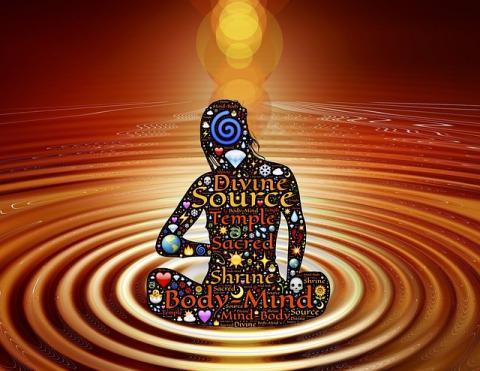
The question of the connection between mental and physical health has been asked repetitively for centuries, and it has only been in the last several decades that Western medicine has caught up to holistic practices and began to acknowledge an interdependent relationship between the two. Mental and emotional patterns create biochemical pathways in the body, and it follows that just as the mind affects the body, so too the body can affect the mind. It is believed by many professionals in the field that addressing habitual tension and stress patterns through healing movement can release psychological trauma.
Tom Myers, author of “Anatomy Trains” is certified in Structural Integration, studied under Ida Rolf (the creator of Rolfing therapy) and has been practicing and studying manual therapy for 40 years. One of the primary focuses of his research has been on fascia, the powerful connective tissue that “retains a physical record of stresses, strains and injuries to muscle fibers.” What is so unique about fascia is that it functions as a lubricating surface between every muscle group and the fiber of each individual muscle. It connects every bone, nerve and organ, every major system and subsystem of the human body. It adapts itself to the way in which an individual uses their body, relaying information related to sensory motor, movement and sensation to the brain. Imagine it as a suit that wraps throughout the entire body and essentially acts as one of the largest and most important sensory organs.
Described in depth by Dr. James Oschman, professor at Energy Medicine University and author of “Electric Universe --The Human Story”, “connective tissue is a composite material, consisting of strong insoluble collagen fibers embedded in a gel-like ground substance. The fibers are arranged in highly ordered crystalline arrays. Like many other crystals, connective tissue is piezoelectric, i.e., it generates electric fields when compressed or stretched. Hence, any movement of any part of the body, muscle, bone, skin, blood vessel, etc. generates characteristic electrical fields that spread through surrounding tissues. Since collagen is a semiconductor, the connective tissue is an integrated electronic network that allows all parts of the organism to communicate with each other.”
So how does this tie into our emotional and mental health? On a biochemical level, your body reacts to emotions in this way: Emotions (whatever they may interpreted as) create a sort of “conversation” between your brain and nervous system. This information is then transmitted throughout your body including to the muscles, which then relay it to your fascia and other connective tissues. Depending on the content of the emotions, this can either serve or hinder us. When developed into a reoccurring pathway, this is reflected in the patterns of how we hold ourselves in general, both mentally and physically. We can see it in our posture, our behavior, our thoughts and our tendencies towards particular illnesses. Our emotions are not floating out in the ether of space; they are being transmitted constantly on a biochemical level and stored in the tissues of our body.
According to Myers, when stress accumulates in the brain, it releases itself in one of two ways. First, through the chemistry of the body, which, when released changes the messenger molecules of the entire body, creating an array of effects throughout. The effect upon the nervous system will in turn affect your mood. The second way the brain seeks to release stress is by creating patterns or pathways where tension is sent and stored in specific regions of the body. In numerous psychosomatic studies, strong comparisons have been drawn to link patients suffering from the same physical ailment to similar emotional states of trauma providing supportive evidence of the mind-body connection.
Life is ever changing and we experience emotions constantly. It is, therefore, perfectly normal that there be variations in how we feel over time. There is no harm in this, according to these theories, as long as the emotional states are worked through and in a sense “moving.” However, unresolved emotions that stay with us for a long time create a chronic pattern of tension. The brain is sending out the same messages of stress over and over to the same regions of the body and over time muscles, organs, posture, mental state and physical health will all yield to this pattern.
The incredible thing is that fascia is dynamic and over the last 50 years especially, more and more research is supporting that we are not stagnant beings pre-disposed to the genetic traits of our parents and their parents before them. We are capable of transformational change and healing on a physical, chemical and mental/emotional level and we can do this throughout our entire lives. If a strong pattern of stress has developed, healing must be done on an acute level particular to the nature of affected connective tissue such as the fascia. It is therefore proven to be extremely beneficial to engage in healing movement practices such as yoga, which give the muscles a viable chance to relax. The body at this stage needs long and slow stretches and in this way you are actually able to re-shape and change the composition of connective tissues. Due to the fact that you are literally re-arranging patterns in the body and its field of energy, many people will experience a strong emotional reaction to various methods of movement healing. This gives way to the capacity for both physical and emotional restoration to take place.
We only are given one temple to work with in this life and it is in our own hands to provide it with the best possible tools for healing and health as we move through this journey!







